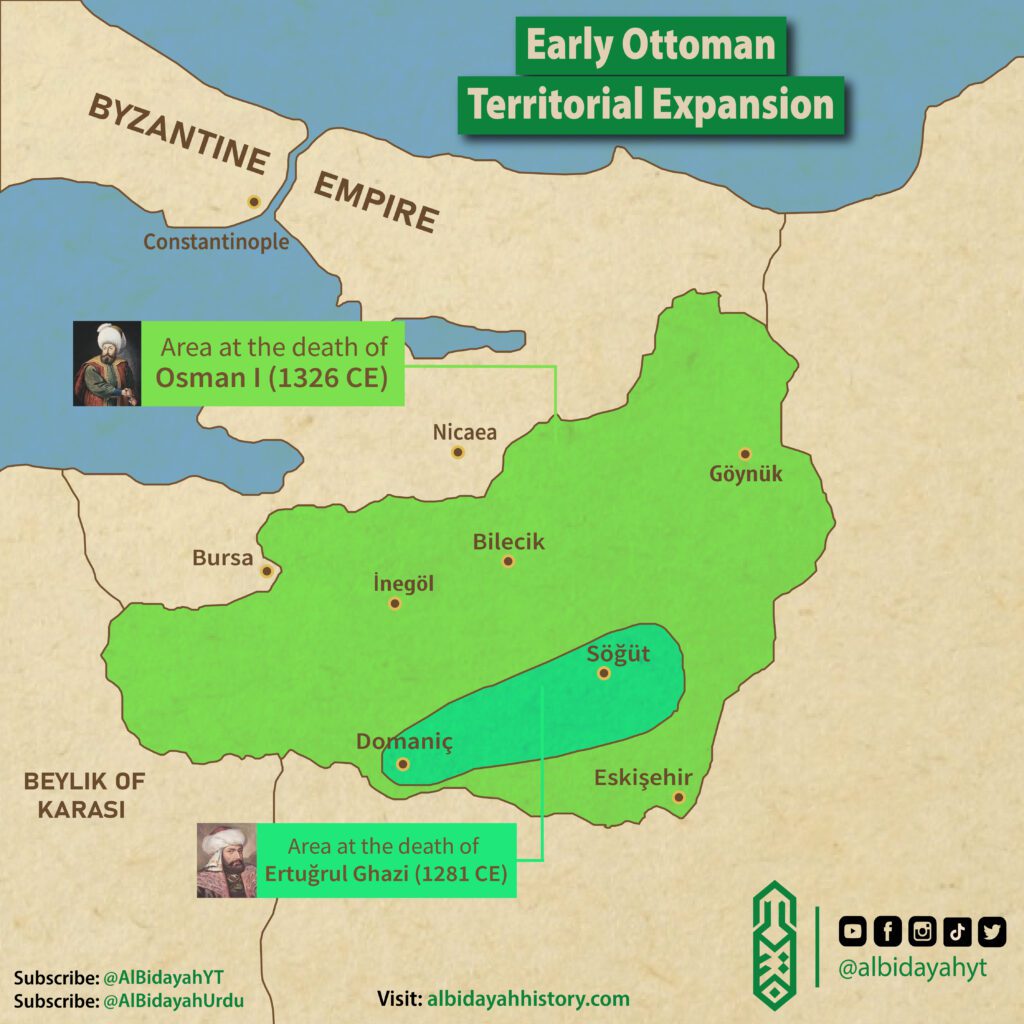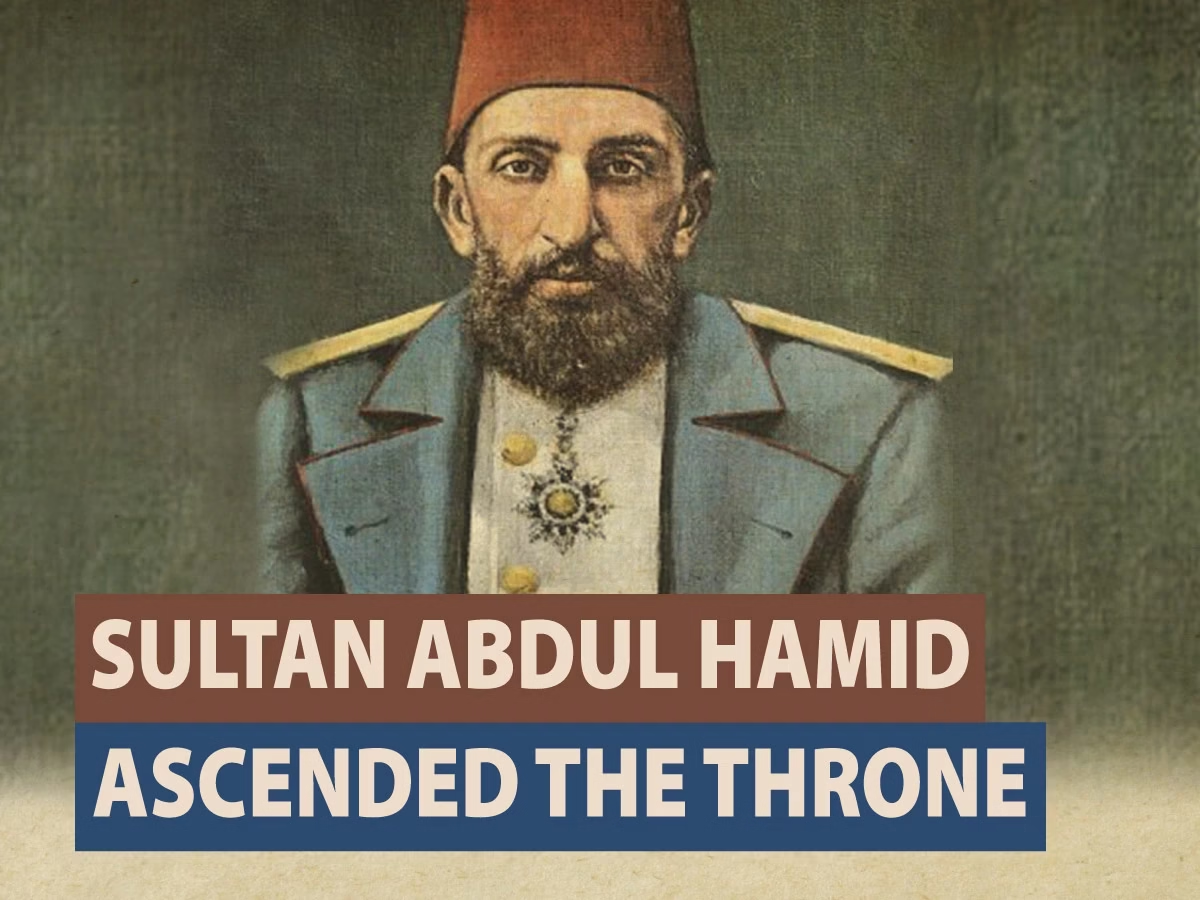
Strategic Location of Söğüt
Osman I’s success as a conqueror was significantly influenced by the strategic location of his beylik. His capital, Söğüt, was situated on a well-defended hill along the vital road connecting Constantinople to Konya, giving him a strong military advantage. This location became crucial due to the political fragmentation of Anatolia, which allowed smaller states like Osman’s to rise in prominence.
Expansion Through War and Jihad
As the leader of a frontier beylik bordering Byzantine territories, Osman focused on territorial expansion through war and Jihad. Inspired by the Seljuks, his goal was to incorporate Byzantine lands into the Islamic Caliphate. The weakening Byzantine Empire and conflicts in Europe provided Osman with an opportunity to push westward into Anatolia.
Ottoman Territorial Expansion Under Osman I
- At Ertuğrul Ghazi’s Death (1281 CE)
At the time of his father Ertuğrul Ghazi’s death in 1281, the Ottoman beylik was a small domain centered around Söğüt and Domaniç. - At Osman I’s Death (1326 CE)
By the time of Osman’s death in 1326, the Ottomans had expanded significantly, capturing key Byzantine towns such as Bilecik, İnegöl, and Yenişehir. His forces advanced toward Bursa and Nicaea, marking the beginning of Ottoman control in northwestern Anatolia.
Legacy and Future Expansion
Osman’s strategy relied on military strength, strategic alliances, and exploiting Byzantine weaknesses. His successors, particularly Orhan Ghazi, continued this momentum, leading to the eventual fall of Bursa and Nicaea.
The Ottoman Empire’s sovereignty was embodied in the dynasty of Osman I, who was its founder and namesake. His family had ruled since 1299 in an unbroken lineage throughout the empire’s history. The Ottoman sultan maintained supreme authority over the Ottoman Empire’s polity. The sultan was the empire’s sole and absolute regent, head of state, and head of government.
See Also: Seljuk Dynasty Family Tree



